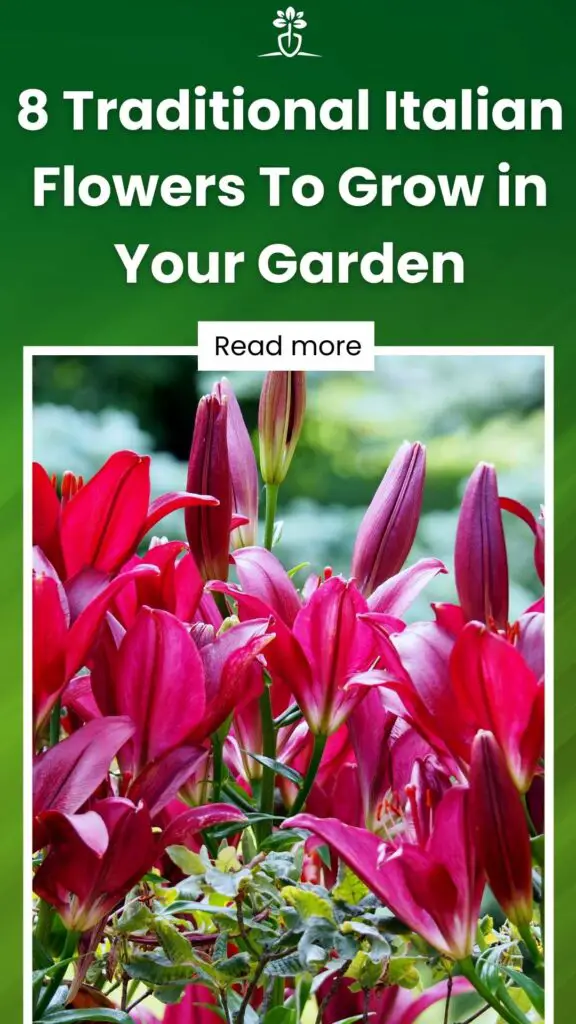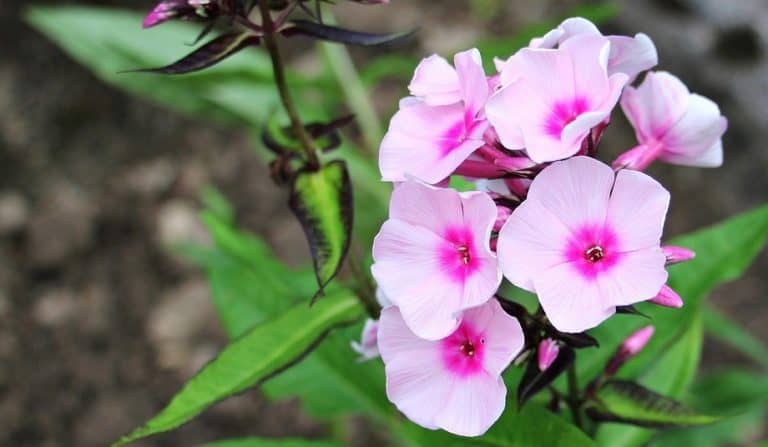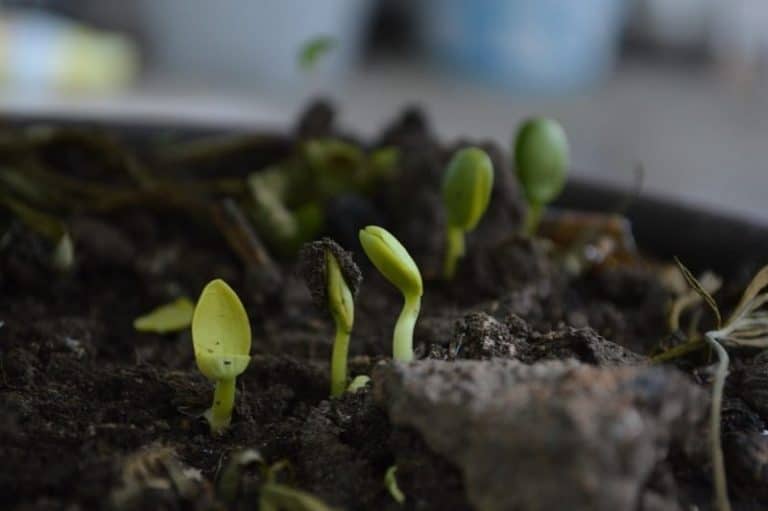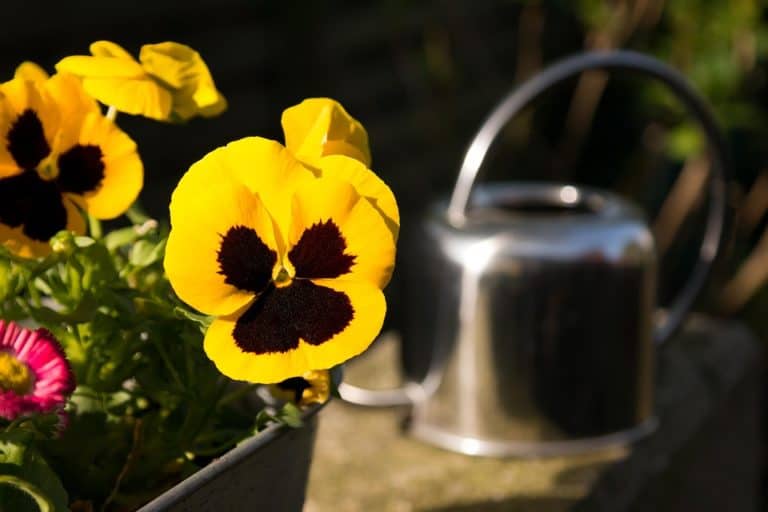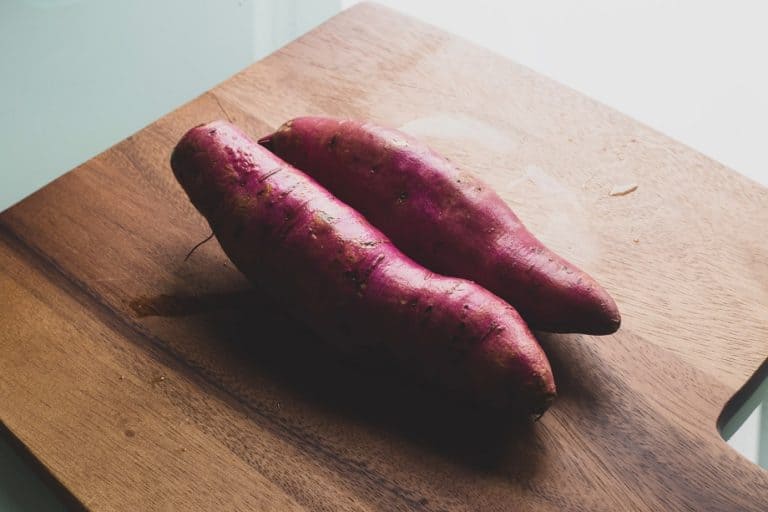8 Traditional Italian Flowers To Grow in Your Garden
Italy has to be one of the most beautiful countries in all of Europe, and there are plenty of reasons for this.
The climate is largely warm and pleasant, perfect for a country where well over half of its length is shoreline to a beautiful sea.
The culture is rich and vast, with practically every city being packed with history and compelling stories of the people that live there.

For us, we think that a big part of Italy’s charm can be chalked up to the amazing variety of flowers that are grown there.
Whether they have grown there for millennia, or have been imported over the centuries, the Italian peninsula has the perfect climate for a huge range of plants to be grown and cultivated there.
If you’re looking to grow a bit of that Italian charm in your home, here are 8 types of traditional Italian flowers for you to grow in your garden right now!
Or, at the very least, when the time is right.
Contents
1. Sunflower

To start off this list, let’s take a look at a plant that is famous across the world, and has found a home in the beautiful Northern Italian countryside: The sunflower.
Also known by its Latin name, Helianthus, the sunflower is vest known for its large, tall stem, and its iconic large flower made up of its large flower head which, in combination with its bright and large yellow petals, looks just like the sun on a cloudless day.
Few other plants have striking and well-known flowers like the sunflower (funnily enough, many of those other iconic flowers are also considered classic Italian plants).
The plant itself actually comes from Southern North and Latin America, where it was grown by a large range of indigenous cultures and nations for thousands of years, both as a food source for their people, as well as feed for many species of livestock.
When settlers and colonizers from Europe came over to the Americas in the 1500s, and has since been grown in many countries across the Northern Hemisphere.
And because of the similar latitudes that each country has to each other, sunflowers have found a comfortable home in the temperate hills of the Southern European country.
Indeed, the hills and fields of Tuscany would feel incomplete without these beautiful flowers growing across them in huge fields.
If you want to try and grow sunflowers in your own garden, make sure that you sow the seeds for the flowers in early springtime.
That way, the plant has a chance to establish itself in time for its flowers to bloom before the year is over.
Make sure that there is at least a little shade in your chosen sport, that you water the seed well, and feed it the appropriate nutrients every week.
2. Lily

Known best for its large, fragrant flower, and protruding stigma and stamens, the lily is another iconic plant that makes just one of its homes in the Italian peninsula, where it is almost universally loved by millions of people in just Italy alone.
Lilies come in a huge range of colors as well, being grown in shades of blue, yellow, white, orange, red, purple, and pink. This means that there is an occasion that calls for flowers, there is a color of Lily that is perfect to be added to an arrangement.
Lily flowers have been a popular symbol for the Virgin Mary in Christian imagery, where they are a symbol of youth and of a pure spirit.
Because of this, it was also a popular piece of imagery for medieval knights to use in heraldry on their coats of arms.
You’ve probably seen a stylized lily on many pieces of European iconography from the Middle Ages, such as in France or Italy.
Several varieties of lily bulbs are actually edible to humans and can be used in quite a few traditional recipes across East and Central Asia.
Although some species and cultivars are known for having an incredibly bitter taste that makes them virtually inedible.
However, if you’re interested in the lily flower, chances are that you’re more interested in growing it, rather than eating it!
If that’s the case, then make sure that you are putting your lily bulbs in well-drain soil that will prevent root rot from taking hold.
Although most lilies are temperate flowers that don’t do too well in colder places, there are a few varieties, such as the Orienpet lily, that can survive in slightly tougher climates and zones.
Make sure that you pick the right type of lily for your garden. Just remember that this flower can be pretty toxic to your house cats and dogs, so try and keep it out of reach of them!
3. Chrysanthemum

Another staple of Italian floral culture is the chrysanthemum. These beautiful little plants are best known for their incredibly dense petal arrangements that can be found on their flower heads.
They come in a huge range of colors, from beautiful bronze color in the Bruno variety, to light pinks in Leading Lady’s, to deep reds in Spartan Fire cultivars.
You can usually find the right color for any occasion when it comes to the chrysanthemum.
Despite their popularity across the world, they actually originate from China and other parts of East Asia. This is the place where the most varieties of this little flower are grown, and in a huge range as well.
Of the 20,000 different varieties across the world, almost half are from China alone!
So why is this flower considered a classic and traditional flower in Italy?
Well, it’s partly due to their specific and unique meaning when we are talking about flower symbolism.
Whilst the chrysanthemum is a pretty widespread symbol of joy and happiness across the world, they are actually considered symbols of mourning in much of Italy.
This is partly due to the fact the flowers of this plant start to bloom around the same time that All Saints’ Day, a day of mourning for saints of the Catholic Church.
On the subject of when they bloom. Chrysanthemums tend to bloom a little later than many other flowering plants, they are usually planted as seeds or potted as cutting around May, when there is little to no chance of frost damaging the young plant.
They do well as potted plants inside homes, especially more tender and tropical varieties of it.
Remember to cut this plant back a little once flowering season is over, which is typically around the time of the new year.
4. Orchids

Coming in a whole slew of pinks, purples, whites, and blues, orchids are perhaps some of the most distinctly shaped flowers when it comes to the traditional flowering plants of Italy.
They are best known for their thick, succulent flower, their dainty, thin woody stems, and, of course, the massive array of flowers that can be grown at their tips.
We can’t specify a particular shape that the flower tends to grow in, because the orchid family of flowers is probably one of the biggest in the floral world.
Of the list of species that are currently recognized, there are over 25,000 different species! And that doesn’t even cover the varieties that can grow within a single species!
When you take crossbreeding and hybridizing orchids into account, there are well over 100,000 different cultivars!
Perhaps this huge range isn’t too surprising, given that they can grow in pretty much any condition that plants can normally grow under. About the only habitat they are not recorded growing in are glaciers.
Because of its generally temperate climate, many types of temperate orchids have been grown across Southern Europe, including in Italy, where the Orchid is a traditional symbol of strength and wealth.
So when it comes to growing an orchid for yourself, the first thing you’re going to need to do is to pick a variety that can grow in your garden or inside your house.
Tropical orchids are more popular as garden plants, but more temperate varieties will be just as welcome in your home as well.
And because there are so many species and cultivars to pick, giving specific advice for the whole family of orchids is next to impossible.
About the only thing that they have in common is that they need well-draining soil, and prefer a humid climate to grow in. Anything after that is up to you to find!
5. Rose

Is there a more iconic symbol of love than the rose? And being perhaps one of the most iconic countries in the world when it comes to love and romance, it’s little surprise that the rose has such a long history with Italy.
Their bright, petal-filled flower heads. Their woody, thorny stems. The huge array of colors they can be found in. Virtually every part of the rose flower is iconic in some way. And they all come together to create a magnificent flower that is prized across the world.
The Rose species was originally grown in Central Asia, before it became a popular plant to grow across much of the Northern Hemisphere, from the United States, to many regions of Asia, and especially in Europe, where they have been used as a symbol of both romantic and platonic love for others.
In Ancient Italy, for example, the rose became synonymous with the Roman Goddess of Love Venus, and her Greek counterpart, Aphrodite.
The rose is quite possibly the most iconic symbol to offer someone when you are looking to express your love for another.
In terms of growing them for yourself, despite what their delicate petals might suggest, the rose plant is actually quite an easy flower to grow for yourself, although they do need a decent amount of care to reach their full, amazing bloom.
Making sure that you plant the root cuttings for this plant when there is no frost on the grown gives it the best chance to establish itself, whether that’s in spring, or in early fall. This way, the root system will have a chance to develop before the cold of winter can damage it.
Make sure that this plant will be in an area that receives a lot of sunlight, and keep it well-watered, and you should be good to go.
6. Buttercup

For perhaps one of the most underrated flowers in this guide, we turn to the buttercup.
We say underrated, as this plant is often mistaken for a type of dairy flower, or even a dandelion in some cases, due to its strong yellow coloring.
However, buttercup is in fact their own distinct family of flowers, with over 600 species that fall into this particular group, although the most common species are sometimes considered a weed, like their dandelion colors.
This is a shame because this is a beautiful flower in its own right!
They have traditionally grown across Europe, especially in the North, but have found their way into the fields of many other countries, including Italy, where they have carved out a niche with Sunflowers and Orchids as plants not native to where they are found but are still considered traditional flowers according to their cultural history.
As the status as ‘weeds’ in some places might suggest, growing an arrangement of buttercup flowers isn’t too difficult, with a decent amount of resistance to colder temperatures.
However, if you are growing buttercups in your garden you should consider growing their seeds in nursery trays before you plant them in a flower bed or pot.
They should be grown either at the beginning of fall or around springtime, depending on your local climate.
Keep in mind that raw growing buttercup flower heads are also toxic, and can cause a person to have bloody diarrhea, and form blisters in their mouths to form.
However, this toxicity does not carry over to dried plants, so don’t worry if you find an old or dried-up example in your flower bed.
7. Daffodil

For the perfect Italian flower that blooms early in the growing season, you’ll want to plant a few daffodils in your flower beds.
Their bright colors often bring a dash of life into a garden or backyard that has yet to fully wake up from the chill of winter.
Also known as the narcissus in many parts of the world, the daffodil has been grown across the southern Mediterranean, the Middle East, and North Africa, for thousands of years.
The ancient Romans and Greeks have recorded the presence of this unassuming little flower.
So unassuming was, in fact, that most of the record and research done on this plant up until the renaissance was for its medicinal uses and properties.
It was only in the 1400s that this flower was considered for its beauty, with its bell-shaped flower head that can come in a variety of shades of yellows, oranges, and white.
If you’re looking to grow these flowers for yourself, remember that you should be planting your bulbs well in advance of their usual blooming season.
Because the daffodil flowers so early compared to other plants, this means planting it as early as September of the previous year.
Outside this, though, daffodils are amongst some of the easiest plants to grow yourself.
They can be grown in flower beds or in pots and containers equally easily, so long as there is a decent amount of drainage.
They can survive even some pretty frosty winters, which perhaps isn’t too surprising, given that they start to germinate at a colder time of year than other flowers.
Furthermore, they don’t require too much upkeep or maintenance on your part, with maybe the occasional cutting back once they have stopped flowering, so they can prepare to grow the next year.
8. Cornflower

For another flower that is a Native of Italy, that is perhaps a little rarer than others, but as much a part of the floral culture, we turn to take a look a the humble cornflower.
When we mean ‘humble’ when talking about the cornflower, we are mostly talking about the size of this flower.
At under 3 feet tall, whilst this isn’t necessarily the smallest plant in this guide, it is certainly one of the thinnest, with its stem often being very thin, its leaves only being a few centimeters long, and the trademark flower head only being about an inch or so in diameter.
This is a pretty small plant, in every sense of the word. However, its intense light blue coloration makes it stand out from many other plants that we have talked about so far.
The plant is also a very rare sight in Europe and Italy these days, compared to how widespread they are in other regions, including in Europe hundreds of years ago.
They typically grow in the same conditions that a good deal of wheat grain plants and crops grow in, and so are usually in direct competition with them for premium growing space.
As agriculture became more widespread across Europe, many fields of cornflowers were cleared to make room for large-scale agriculture, and it became an endangered species in Europe as a result.
It has only just started to grow in large numbers again in the last few decades, making this a rare, but welcome, sight in Italian fields.
To grow one of these plants yourself, the seeds for this plant need to be sown at the height of summer and early fall, from June to September, so that the plant may become established once winter arrives.
Conclusions
So, there you have it. A list of some of the most charismatic flowers that are traditionally grown across Italy and the Italian peninsula.
The country allows for such a rich diversity of flowers to grow in its field, mountains, and shores, that we couldn’t possibly cover all that there is to experience from the floral variety that this country offers.
But we hope that this guide has helped you decide on which of these wonderful plants you might want to grow for yourself.
